Great Himalayan National Park Conservation Area
By Raksha Nagaraj
What is the Great Himalayan National Park Conservation Area?
Situated in the northern part of India, the Great Himalayan National Park is a protected national park with some of India’s most scenic and ecologically rich flora and fauna. Located in the Kullu district of Himachal Pradesh, the national park covers an area of about 1,171 square kilometres (452 square miles) in the western Himalayas.
The Great Himalayan National Park plays an important role in protecting India’s unique species of animals, birds and trees. It is home to more than 375 species of fauna, including endangered animals such as the snow leopard, Himalayan brown bear, and musk deer. It is also a paradise for bird watchers with over 180 species of birds, including the colourful Himalayan monal and the Himalayan griffon.
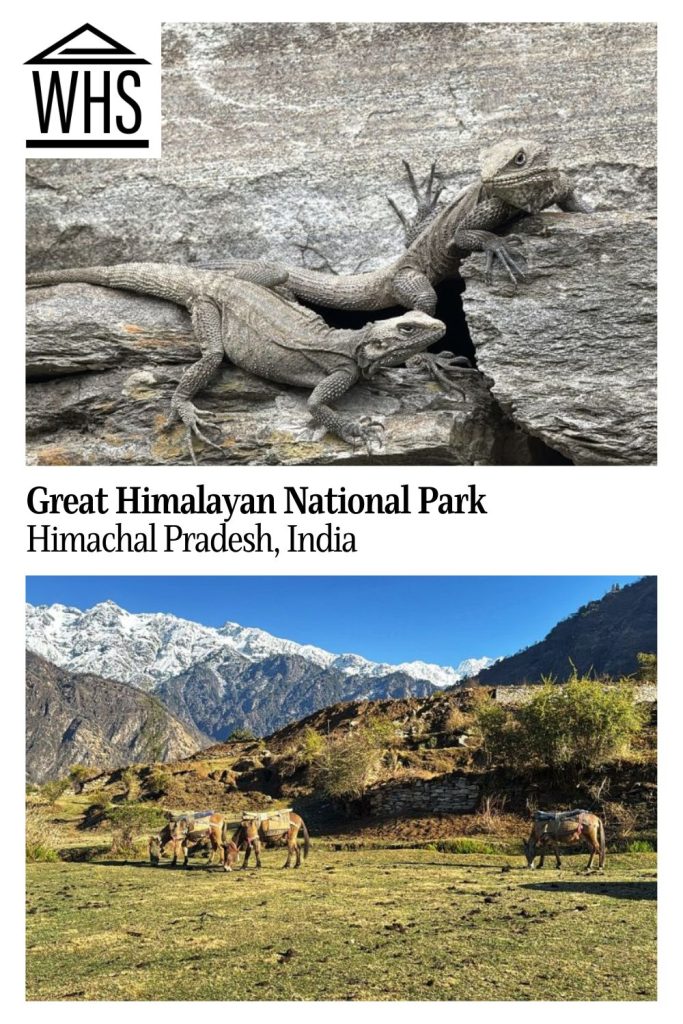
The mountains within the Great Himalayan National Park can only be explored on foot. The park’s dense forests, alpine lakes, meadows and high-altitude glaciers make it a unique ecosystem. They offer a meaningful experience for nature lovers, trekkers, and wildlife enthusiasts who are looking to explore the untouched and remote side of the Indian Himalayas.
Disclosure: This article contains affiliate links. Making a purchase through an affiliate link will mean a small commission for this website. This will not affect your price. Privacy policy.
Why is the Great Himalayan National Park a UNESCO World Heritage site?
The Great Himalayan National Park was declared a UNESCO World Heritage Site in 2014 for its outstanding natural worth and biodiversity. The national park is the perfect example of Himalayan biodiversity and a rare mountain ecosystem. According to UNESCO, besides all of the animals, birds and insects the park protects, it “is home to 805 vascular plant species, 192 species of lichen, 12 species of liverworts and 25 species of mosses,” some of which are endemic to the area.
One of the main reasons for UNESCO recognition is that the area remains largely untouched by human development. There are no roads inside the park, and access is only by foot, which helps preserve its natural environment. The park also includes buffer zones that support eco-friendly livelihoods for local and nearby communities through sustainable tourism and conservation education.
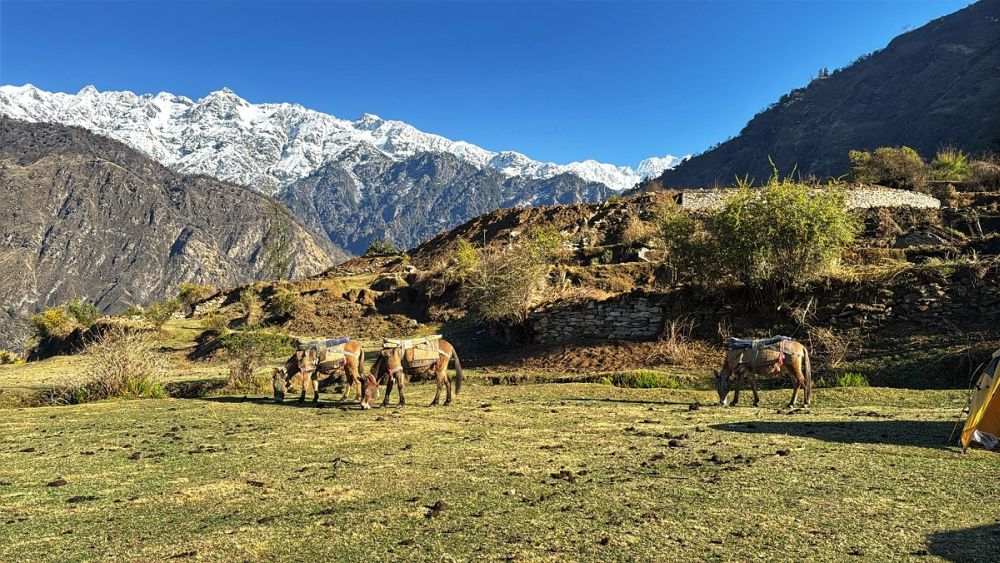
What can you expect on a visit to this national park?
The park offers a raw and immersive experience in one of India’s most remote and untouched regions. The mountains feel like a second home to me. I visit the mountains often, mainly for the trekking trails. The region offers a mix of stunning landscapes, diverse wildlife, and meaningful cultural interactions. The locals are warm and welcoming, which adds to the overall experience. You can expect long walks through dense forests, flowing river valleys, open alpine meadows, and quiet mountain trails far from busy crowds.
Trekking
Trekking in the Great Himalayan National Park is one of the best ways to experience the untouched beauty of the western Himalayas. You can explore its forests, meadows, lakes, and high-altitude landscapes by going on these mountain trails. The trails are remote, scenic, and offer opportunities to spot wildlife and interact with local communities.
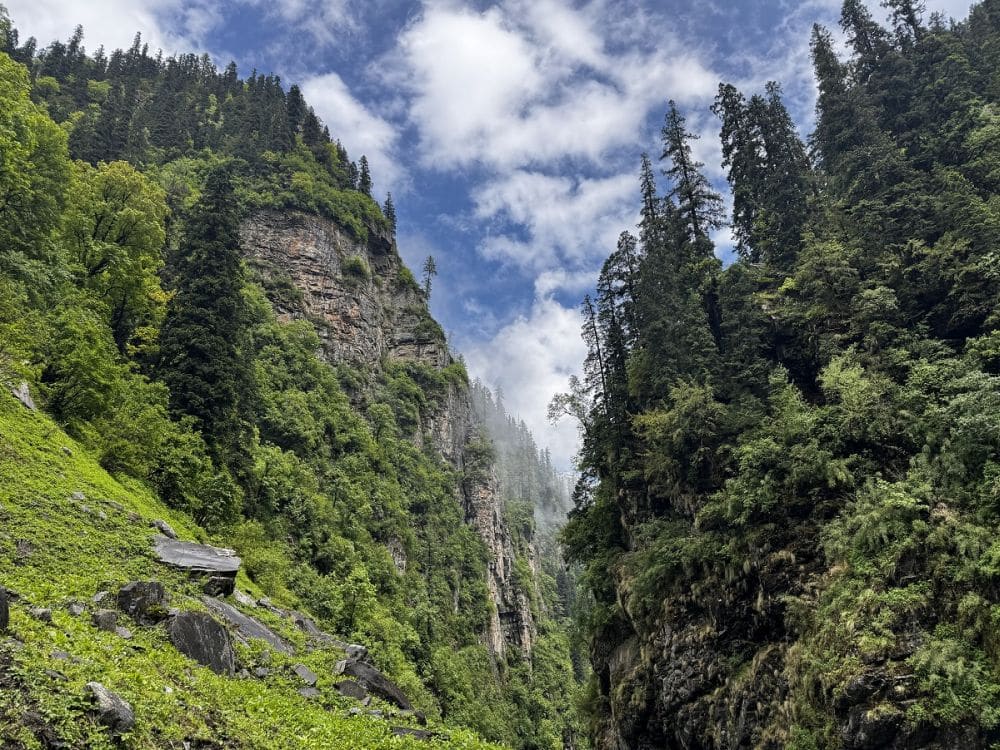
- Tirthan Valley Trek – One of the popular trails is the Tirthan Valley trek, which begins near Gushaini village. This route takes you along the Tirthan River through pine forests, waterfalls, and remote campsites. The trail is known for its bird life and views of snow-covered peaks.
- Sainj Valley Trek – Starting from the village of Neuli, the trail passes through villages, traditional temples, and alpine grasslands. This trek is less visited compared to Tirthan, making it ideal for trekkers looking for unconventional and cultural interactions.
- Rakti-Sar Trek – This trail is for experienced trekkers as it is a challenging route. It involves steep climbs and reaches above 4,000 metres (13,100+ feet). The trail rewards trekkers with high-altitude lakes, glacier views, and wide alpine meadows filled with wildflowers during spring and summer.
All treks require prior permission from the forest department, and it is recommended to hire local guides or go with reputed trekking agencies for navigation and support.
Consider this five-night six-day trekking tour, which includes some camping and some homestays.
Wildlife and bird watching
The park is a great place for wildlife and bird watching, offering a chance to see some of the rarest species found in the Indian Himalayas. The park is home to more than 375 species of fauna. Some of the unique animals that live in the national park include the snow leopard, Himalayan brown bear, blue sheep (bharal), and musk deer. These species are difficult to spot as they live in higher altitudes and more remote parts of the park.
The park is also home to over 180 species of birds. The colourful Himalayan monal, western tragopan, koklass pheasant, and Himalayan griffon are just a few of the birds that can be seen in the region. Bird sightings are more common at lower and middle altitudes, especially during the early morning or evening hours.
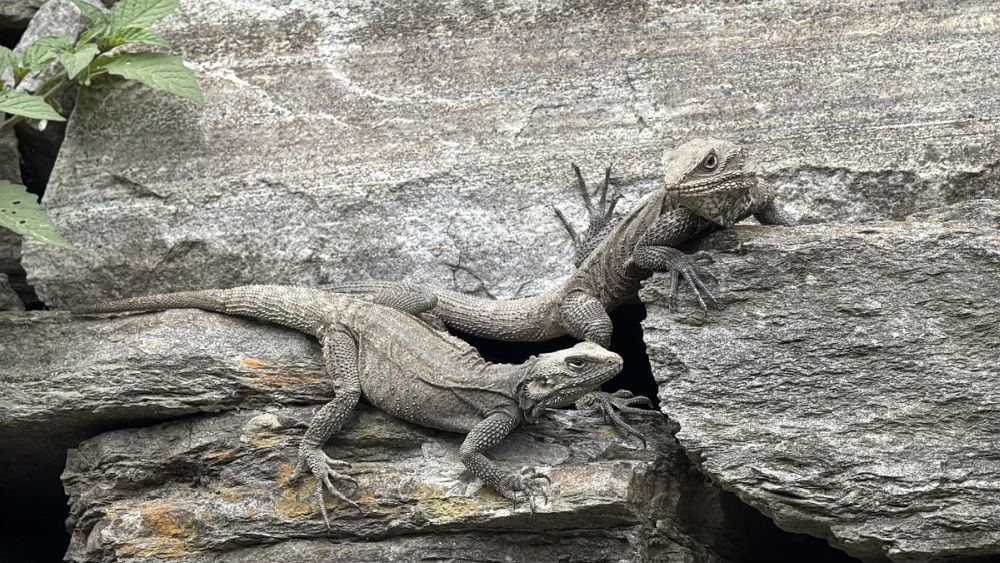
Cultural sites
The Great Himalayan National Park is also closely connected to the local culture and traditions of Himachal Pradesh. The villages located near the national park are home to indigenous communities and tribes. These communities follow age-old customs and are deeply respectful of the forest and its residents.
During treks, trekkers often pass through small villages where they can see traditional wooden houses and ancient temples built in local architectural styles using local resources. And depending on the trails, trekkers sometimes stay in homestays in these villages.
Is the Great Himalayan National Park worth visiting?
Absolutely, the Great Himalayan National Park is definitely worth visiting, especially for those who enjoy nature, trekking and raw mountain experiences. The scenic beauty is unmatched, with river valleys, alpine landscapes and high-altitude views that change with the seasons. The trails are peaceful, the campsites are basic but scenic, and the entire experience feels personal and rewarding.
What sorts of travellers would like this park?
The Great Himalayan National Park is best suited for travellers who enjoy nature, solitude and slow, immersive travel. It attracts trekkers and hikers who prefer remote trails, offbeat routes and natural landscapes without crowds. The national park is perfect for travellers who enjoy the outdoors, nature, wildlife and adventure. It is not for people who prefer luxury and comfort, but is ideal for someone who loves minimalism and nature.
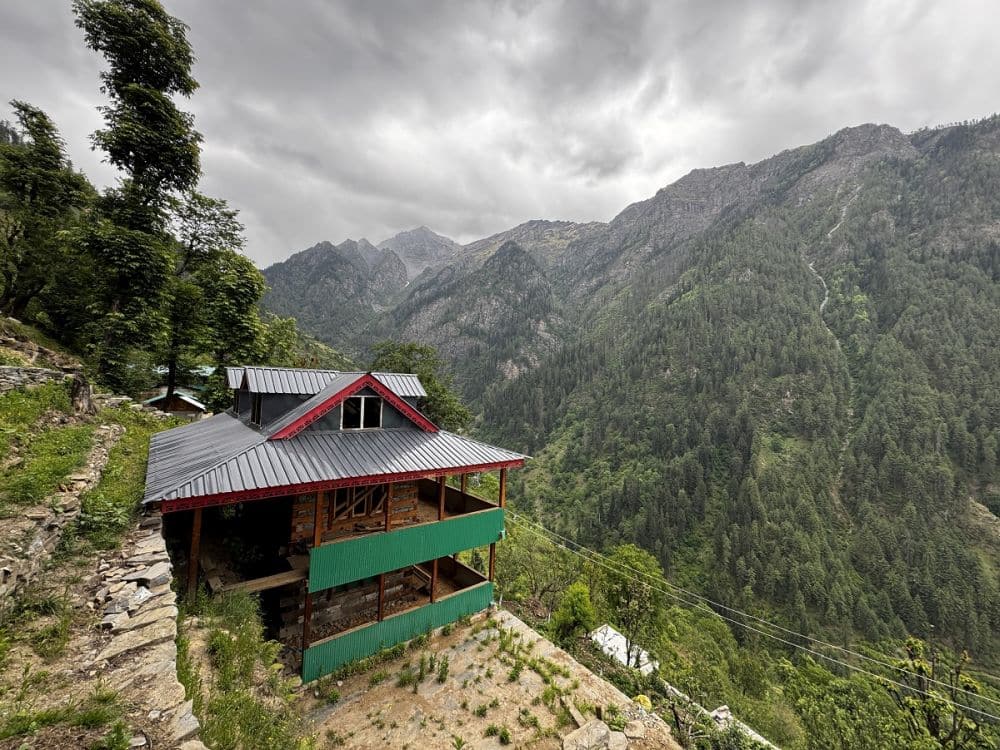
Tips for visiting the Great Himalayan National Park
The best time to visit the park is during the spring and autumn seasons. Spring season is between April and June, and autumn season is between September and early November. Avoid the monsoon season (end of June to August), when the region is not ideal for treks. No matter when you are there, be prepared for all weather conditions as the weather changes suddenly in the mountains.
Many trekking trails and remote areas may not have easy access to food and water, so carry your own. Carry a water filter for drinking water that you can collect from rivers and waterfalls.
Hire local guides or go with a reputable trekking agency when you go for trekking in the Himalayas. Make sure to get permission from the relevant authorities before going on treks in the mountains.
Avoid littering and maintain silence in the national park.
Mobile networks may be weak or non-existent in the mountains.
Public transport is limited in remote areas. Hiring a private vehicle or using your own vehicle is the best way to explore.
The Great Himalayan National Park requires at least a week.
Two other national parks in the north of India together form a UNESCO site that is also a good place for trekking in the mountains: Nanda Devi and Valley of Flowers.
Where is the Great Himalayan National Park?
Part of the western Himalayan region, the park is located in the Kullu district of Himachal Pradesh, in the northern part of India.
By car – The closest towns to the national park are Banjar and Kullu. The best way to reach the national park is either by driving or taking a private taxi, or as part of a trekking tour. Banjar and Kullu are around 60 kilometres (37 miles) away.
Book your accommodations in or near Banjar or Kullu.
Compare rental car prices here.
By public transport – Accessing the national park by public transport (bus) is a bit difficult as there are only local buses available that may not be frequent. It is best to reach the town of Banjar or Kullu and talk to the locals about the public transport.
For more information about the Great Himalayan National Park, see its official website.
Have you been to Great Himalayan National Park? If so, do you have any additional information or advice about this UNESCO World Heritage site? Please add your comments below!


